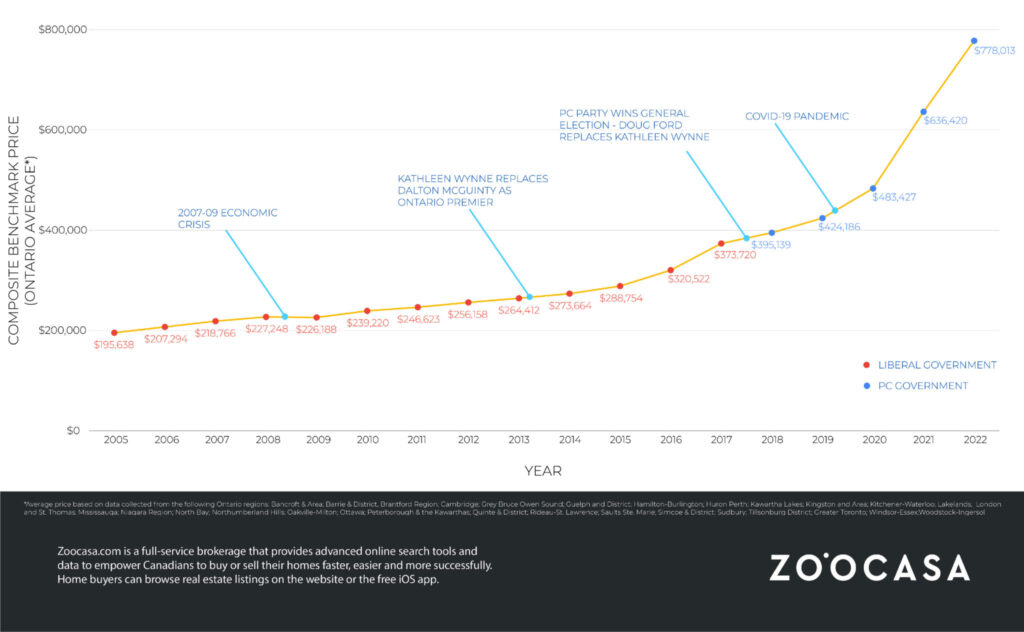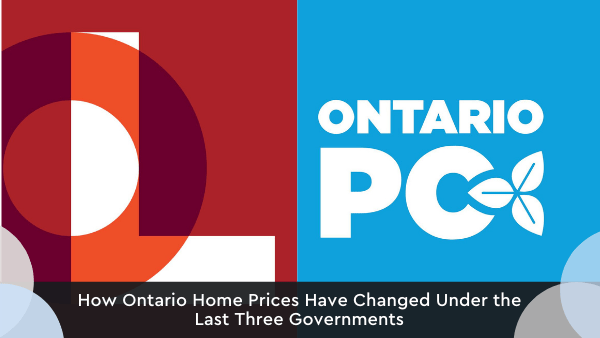Housing affordability has been a major talking point in the build-up to the Ontario election. As home prices have sky-rocketed throughout the last two years during the pandemic, each party has outlined their promises to make housing affordable ahead of the provincial election. Rising prices, however, are not just a symptom of the pandemic, but have been a noticeable trend for decades. We’ve analyzed the data to see how prices have changed under the last three Ontario governments, as far as data would allow.

Home prices increased steadily throughout the Liberal term. The slight dip in 2009 is reflective of the economic crisis, but the recovery was swift enough that the price decrease is not particularly noticeable.
As 2016-2017 saw a rapid increase in home prices, particularly in Toronto which grew over 30% between March of 2016 and March 2017, the Ontario government responded with the Fair Housing Plan, which contained 16 different measures to cool the housing market. These included a 15% foreign buyer tax and expanded rent control rules. Price growth slowed, but in the years following this, the market seems to have recovered.
The pandemic has had a huge impact on housing prices. As it hit, interest rates dropped to all-time lows, meaning it was far easier for those in the market to receive a low-interest home loan. Hone prices dipped after the initial lockdowns were short-lived and prices quickly shot up to record highs as inventory numbers tumbled, particularly during 2021. Towards the end of the year, multiple cities were seeing all-time price highs paired with all-time housing stock lows, which continued to drive the price of homes up.
Throughout 2022, the Bank of Canada has increased interest rates, partly in an effort to cool the housing market. We have already seen some of the effects; housing prices have settled, even dropping in some areas last month, and with further announcements expected to continue increasing rates, it is likely those prices will continue to drop.
